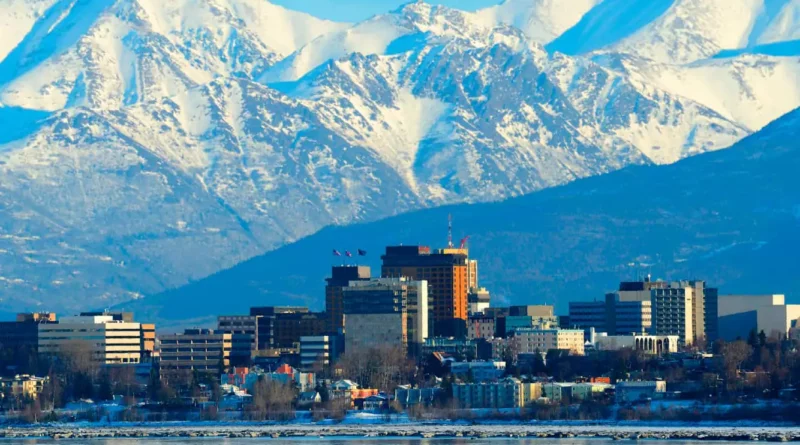History of Anchorage Alaska
Anchorage, Alaska, is the state’s largest city and a vibrant hub of culture, commerce, and natural beauty. Its history, however, is just as compelling as the breathtaking landscapes that surround it. From its origins as a native Dena’ina Athabascan village to its pivotal role in World War II and its modern development as a key city in the 49th state, Anchorage has a dynamic past that reflects the broader history of Alaska. This article delves into the history of Anchorage, tracing its development from pre-European contact to the present day.
Indigenous Foundations: The Dena’ina Athabascan People
Long before the arrival of European explorers, the Anchorage area was inhabited by the Dena’ina people, a group of the Athabascan language family. The Dena’ina lived in the region for thousands of years, thriving on the rich resources provided by the land and sea. Their name for the Anchorage area was “Dgheyay Kaq’,” meaning “the place where the trail comes down,” signifying its importance as a crossroads for trade and travel.
The Dena’ina were semi-nomadic, moving seasonally to follow the fish, game, and plant harvests that sustained them. They established villages along the shores of the Cook Inlet and the rivers that flow into it, living in harmony with the environment. The Dena’ina had a complex social structure and rich cultural traditions, many of which have been passed down through generations and are still practiced by their descendants today.
European Exploration: Captain Cook and Russian Influence
The first European to reach the Anchorage area was British explorer Captain James Cook in 1778. On his third voyage, Cook entered what is now known as Cook Inlet, exploring the coastline in search of the Northwest Passage. Although Cook did not find the passage he sought, his exploration laid the groundwork for future contact between Europeans and the indigenous peoples of Alaska.
Russian fur traders began arriving in Alaska in the late 18th century, seeking valuable sea otter pelts. The Russian influence was more prominent in other parts of Alaska, particularly in the Aleutian Islands and southeastern Alaska, but they did establish a presence in the broader Anchorage area. Russian Orthodox missionaries also followed, converting many indigenous people to Christianity and establishing a legacy that remains in the form of Russian Orthodox churches throughout Alaska.
The Alaska Purchase and Early American Influence
In 1867, the United States purchased Alaska from Russia for $7.2 million, a transaction that became known as the Alaska Purchase. Although initially derided as “Seward’s Folly” (after Secretary of State William H. Seward, who negotiated the deal), the acquisition of Alaska proved strategically and economically valuable, particularly after the discovery of gold in the late 19th century.
For several decades after the purchase, the Anchorage area remained sparsely populated, with only a few settlers, traders, and missionaries. However, this began to change with the discovery of gold in the surrounding region, particularly in the Turnagain Arm and the Kenai Peninsula, which brought a wave of prospectors and settlers to the area.
The Founding of Anchorage: A Railroad Town
The true founding of Anchorage as a modern city can be traced to 1915 when it was selected as the headquarters for the construction of the Alaska Railroad. The U.S. government chose the area around Ship Creek as the base for the railroad’s operations due to its strategic location at the head of Cook Inlet. Anchorage was officially established as a tent city, with workers setting up camp along the creek to build the railroad that would eventually connect Seward to Fairbanks.
The railroad brought a boom to Anchorage, as thousands of workers, merchants, and entrepreneurs arrived to take advantage of the economic opportunities. By 1917, Anchorage was incorporated as a city, and the construction of permanent buildings began, transforming the once-temporary settlement into a growing town. The completion of the Alaska Railroad in 1923 further solidified Anchorage’s position as a key transportation hub in Alaska.
Anchorage in World War II: A Strategic Military Outpost
World War II marked a significant turning point in Anchorage’s history. The city’s strategic location made it a vital military outpost for the United States, particularly after the Japanese attack on Pearl Harbor in 1941. The U.S. military quickly established bases in and around Anchorage, including Elmendorf Air Force Base and Fort Richardson, to defend against possible Japanese invasion and to support operations in the Pacific Theater.
The war effort brought rapid growth to Anchorage, as thousands of military personnel and civilian workers arrived to build and support the bases. The city’s population surged, and the influx of people led to the construction of new housing, infrastructure, and services. Anchorage’s role in the war also brought it to national attention, solidifying its importance as a military and logistical center.
The 1964 Good Friday Earthquake: A Defining Moment
On March 27, 1964, Anchorage was rocked by the most powerful earthquake ever recorded in North America. The 9.2-magnitude earthquake, known as the Good Friday Earthquake, caused widespread devastation across southern Alaska, including significant damage in Anchorage. Buildings collapsed, roads were destroyed, and landslides occurred, reshaping parts of the city.
Despite the devastation, Anchorage’s response to the earthquake demonstrated the resilience and determination of its people. The community quickly mobilized to provide aid, rebuild the city, and restore normalcy. The reconstruction efforts led to modernized infrastructure and buildings, helping to shape the Anchorage of today.
Anchorage Becomes Alaska’s Largest City
In the decades following the earthquake, Anchorage continued to grow, fueled by the development of the oil industry in Alaska. The discovery of oil at Prudhoe Bay in 1968 and the construction of the Trans-Alaska Pipeline in the 1970s brought an economic boom to the state, with Anchorage serving as a key logistics and business center.
By the 1980s, Anchorage had surpassed Fairbanks to become Alaska’s largest city, both in terms of population and economic influence. The city’s economy diversified beyond oil, with growth in sectors such as tourism, healthcare, and education. Anchorage’s cultural scene also flourished, with the establishment of institutions like the Anchorage Museum and the Alaska Center for the Performing Arts.
Modern Anchorage: A Vibrant Urban Center
Today, Anchorage is a vibrant and modern city, home to nearly 300,000 people and serving as the economic and cultural hub of Alaska. The city’s downtown area features a mix of historic and modern architecture, with shops, restaurants, and cultural attractions that draw visitors from around the world. Anchorage’s diverse population, which includes significant indigenous, military, and immigrant communities, contributes to the city’s rich cultural tapestry.
Anchorage is also a gateway to Alaska’s natural beauty, with easy access to wilderness areas such as Chugach State Park, the Kenai Peninsula, and Denali National Park. The city’s outdoor activities, from hiking and fishing to skiing and dog sledding, attract adventurers year-round.
Conclusion
Anchorage, Alaska, has a history as vast and varied as the state itself. From its indigenous roots and early exploration to its role in World War II and its growth into a modern city, Anchorage’s history is a testament to the resilience and adaptability of its people. As the city continues to evolve, it remains a vital part of Alaska’s identity, offering a unique blend of urban life and untamed wilderness.
Discover more from City Towner
Subscribe to get the latest posts sent to your email.




